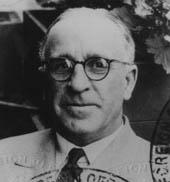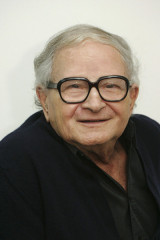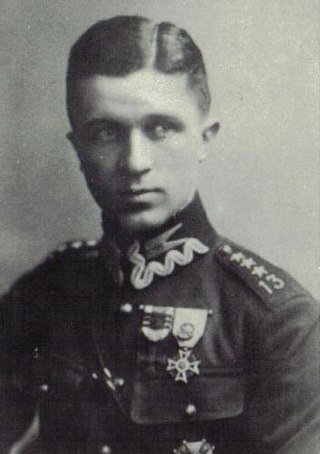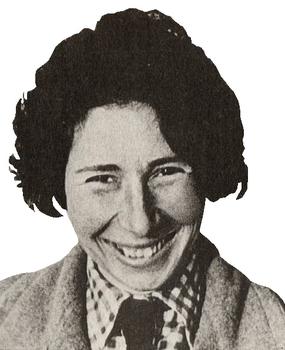Related Research Articles
Espionage, spying, or intelligence gathering is the act of obtaining secret or confidential information (intelligence). A person who commits espionage is called an espionage agent or spy. Any individual or spy ring, in the service of a government, company, criminal organization, or independent operation, can commit espionage. The practice is clandestine, as it is by definition unwelcome. In some circumstances, it may be a legal tool of law enforcement and in others, it may be illegal and punishable by law.

Captain Sir Mansfield George Smith-Cumming was a British naval officer who served as the first chief of the Secret Intelligence Service (SIS).

Rudolf Ivanovich Abel, real name William August Fisher, was a Soviet intelligence officer. He adopted his alias when arrested on charges of conspiracy by the FBI in 1957.

Reinhard Gehlen was a German lieutenant-general and intelligence officer. He was chief of the Wehrmacht Foreign Armies East military intelligence service on the eastern front during World War II. During the early Cold War, Gehlen sided with the Western Allies as the spymaster of the CIA-funded anti-Soviet Gehlen Organisation (1946–56) and the founding president of the Federal Intelligence Service of West Germany (1956–68).

Major Francis "Frank" Edward Foley CMG was a British Secret Intelligence Service officer. As a passport control officer for the British embassy in Berlin, Foley "bent the rules" and helped thousands of Jewish families escape from Nazi Germany after Kristallnacht and before the outbreak of the Second World War. He is officially recognised as a British Hero of the Holocaust and as a Righteous Among the Nations.

Lona Cohen, born Leontine Theresa Petka, also known as Helen Kroger, was an American who spied for the Soviet Union. She is known for her role in smuggling atomic bomb diagrams out of Los Alamos. She was a communist activist before marrying Morris Cohen. The couple became spies because of their communist beliefs.

Rafael Eitan was an Israeli politician and intelligence officer. He also led Gil and served as Minister of Senior Citizens. He was in charge of the Mossad operation that led to the arrest of Adolf Eichmann. He served as an advisor on terrorism to Prime Minister Menachem Begin, and in 1981 he was appointed to head the Bureau of Scientific Relations, then an intelligence entity on par with Mossad, Aman and Shabak. Eitan assumed responsibility for and resigned over the Jonathan Pollard affair, and the Bureau was disbanded. He was subject to an arrest warrant issued by the United States FBI. From 1985 until 1993, he was head of the government's Chemicals company, which was expanded under his leadership. After 1993, he became a businessman, noted for several large scale agricultural and construction ventures in Cuba. He was the chairman of the Vetek (Seniority) Association – the Senior Citizens Movement.
George Kisevalter was an American operations officer of the CIA, who handled Major Pyotr Popov, the first Soviet GRU officer run by the CIA. He had some involvement with Soviet intelligence Colonel Oleg Penkovsky, active in the 1960s, who had more direct relations with British MI-6.

The Duquesne Spy Ring is the largest espionage case in the United States history that ended in convictions. A total of 33 members of a Nazi German espionage network headed by Frederick "Fritz" Joubert Duquesne were convicted after a lengthy investigation by the Federal Bureau of Investigation (FBI). Of those indicted, 19 pleaded guilty. The remaining 14 were brought to jury trial in Federal District Court, Brooklyn, New York, on September 3, 1941; all were found guilty on December 13, 1941. On January 2, 1942, the group members were sentenced to serve a total of over 300 years in prison.

Colonel Maximilian Ronge was the last director of the Evidenzbureau, the directorate of military intelligence of the Austro-Hungarian Empire. Ronge played a key role in the 1913 exposure of Col. Alfred Redl as a double agent.
Wilhelm Höttl or Hoettl was an Austrian Nazi Party member, and SS member who rose to the rank of SS-Sturmbannführer. He served in the Sicherheitsdienst, and by 1944 was acting head of Intelligence and Counter Espionage in Central and South East Europe. After the war ended, he was recruited by the United States Army Counter Intelligence Corps (CIC). Later, Höttl opened a school in Bad Aussee and authored three books. He died in 1999.
Alice Friedmann, known as Litzi Friedmann, was an Austrian Communist who was the first wife of Kim Philby, a member of the Cambridge Five. Records identify her as the Soviet agent with the code name Mary.

Jerzy Ksawery Franciszek Sosnowski was a Major in Section II ("Dwójka") of the Polish General Staff and a Polish spymaster in the Weimar Republic and Nazi Germany (1926–1934), where he used the pseudonyms Georg von Nałęcz-Sosnowski and Ritter von Nalecz.

The Anglican church of Christ Church, Vienna is located in central Vienna, Jaurèsgasse 17-19, off the Rennweg. Worship services are held in English on Sundays and Wednesdays. On the first Sunday of the month there is a service of Evensong.

Ursula Kuczynski, also known as Ruth Werner, Ursula Beurton and Ursula Hamburger, was a German Communist activist who spied for the Soviet Union during the 1930s and 1940s, most famously as the handler of nuclear scientist Klaus Fuchs. She moved to East Germany in 1950 when Fuchs was unmasked, and published a series of books related to her espionage activities, including her bestselling autobiography, Sonjas Rapport.

Spying, as well as other intelligence assessment, has existed since ancient history. In the 1980s scholars characterized foreign intelligence as "the missing dimension" of historical scholarship." Since then a largely popular and scholarly literature has emerged. Special attention has been paid to World War II, as well as the Cold War era (1947–1989) that was a favorite for novelists and filmmakers.

The Secret Intelligence Service (SIS), commonly known as MI6, is the foreign intelligence service of the United Kingdom, tasked mainly with the covert overseas collection and analysis of human intelligence in support of the UK's national security. SIS is one of the British intelligence agencies and the Chief of the Secret Intelligence Service ("C") is directly accountable to the Foreign Secretary.
Hüseyin Yıldırım is a Turkish-American auto mechanic who was sentenced to life imprisonment in the United States for his courier role in the espionage activities of U.S. serviceman James Hall III during the Cold War era. Yıldırım was later pardoned and extradited to his homeland, where he was sentenced to 17 years in prison but served only one day.

Latimer House is a large country house at Latimer, Buckinghamshire. It is now branded as De Vere Latimer Estate and functions as a countryside hotel used for country house weddings and conferences. Latimer Place has a small church, St Mary Magdalene, which was built by Lord Chesham, in the grounds.

Mikhail Petrovich Lyubimov is a Russian novelist and retired colonel in the KGB. He served as spymaster and head of the KGB stations in the United Kingdom and Denmark during the Cold War.
References
- ↑ Helen Fry: Spymaster: The Secret Life of Kendrick 2014.
- ↑ "Captain Thomas Kendrick is Ordered to Leave Germany after Accusation of Espionage" in: Lawrence Journal World vom 20. August 1938".
- ↑ Norton-Taylor, Richard (10 February 2015). ""Spymaster: the Secret Life of Kendrick" - review". The Guardian.
- ↑ Ladislas Farago: Burn After Reading: The Espionage History of World War II, 2012
- ↑ (in German) Rainer F. Schmidt: Rudolf Heß. Botengang eines Toren? Der Flug nach Großbritannien vom 10. Mai 1941 1997, S. 233.
- ↑ "Kendrick's entry on the list at the Imperial War Museum".
- ↑ Helen Fry: The Walls Have Ears 2019